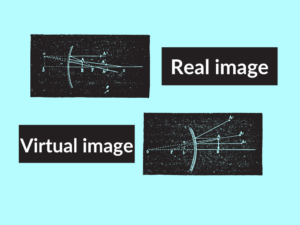Enantiomers and Diastereomers: Understanding the Differences
Have you ever come across terms like enantiomers and diastereomers in the field of chemistry and wondered what they mean? These concepts play a crucial role in understanding the properties and behaviors of various chemicals. In this article, we will explore the differences between enantiomers and diastereomers, providing examples and highlighting their uses. So let’s dive into the fascinating world of stereochemistry!
What are Enantiomers?
Enantiomers are a specific type of stereoisomers that exhibit a non-superimposable mirror image relationship. In simple terms, they are molecules that have the same chemical formula but differ in their three-dimensional arrangement. Enantiomers are commonly observed in molecules containing chiral centers or asymmetric carbons. Chiral compounds are those that are not superimposable on their mirror image, just like our hands.
Examples of Enantiomers
A classic example of enantiomers is the molecule known as limonene. It is found in citrus fruits such as oranges and lemons and contributes to their characteristic aroma. Limonene exists in two enantiomeric forms, (+)-limonene and (-)-limonene, which have identical physical properties but differ in their optical rotation, meaning they rotate plane-polarized light in opposite directions. Another example is the drug ibuprofen, which is sold as a racemic mixture of its enantiomers (both the R and S forms).
What are Diastereomers?
Diastereomers are another type of stereoisomers that do not exhibit a mirror image relationship. Unlike enantiomers, diastereomers can have different physical and chemical properties. They occur when two or more stereoisomers have the same connectivity but differ in the arrangement of their atoms in space. Diastereomers can arise from compounds containing multiple chiral centers, where the configuration of some but not all chiral centers is reversed.
Examples of Diastereomers
An excellent example of diastereomers is tartaric acid, which has two chiral centers. The meso isomer of tartaric acid, known as meso-tartaric acid, is a diastereomer of the enantiomeric forms of tartaric acid. While enantiomers exhibit identical physical properties, meso-tartaric acid has different properties due to its different arrangement in space. Another example is the sugar molecule glucose, which can exist in various diastereomeric forms depending on the arrangement of hydroxyl groups.
Differences between Enantiomers and Diastereomers
To better understand the distinctions between enantiomers and diastereomers, let’s compare them across various aspects. The table below summarizes ten key differences between these two types of stereoisomers.
| Difference Area | Enantiomers | Diastereomers |
|---|---|---|
| Definition | Non-superimposable mirror images | No mirror image relationship |
| Physical Properties | Identical | May differ |
| Chemical Properties | Identical | May differ |
| Number of Stereoisomers | Two | More than two |
| Optical Activity | Equal magnitudes, opposite directions | May differ in magnitude and direction |
| Symmetry | Non-superposable | May exhibit symmetry |
| Mirror Image Relationship | Yes | No |
| Physical Connectivity | Same | May differ |
| Chemical Stability | Same | May differ |
| Stereochemistry | Every chiral center has the opposite configuration | Only some chiral centers have opposite configurations |
Conclusion
In summary, enantiomers and diastereomers are distinct types of stereoisomers with differing characteristics. Enantiomers are mirror images that are non-superposable, while diastereomers lack mirror image relationships. While enantiomers have identical physical and chemical properties, diastereomers can differ in these aspects. Understanding these differences is crucial for understanding the behavior and applications of various chemicals in fields such as pharmaceuticals and materials science.
Knowledge Check
Test your knowledge on the differences between enantiomers and diastereomers with the following questions:
- What is the main difference between enantiomers and diastereomers?
- Do enantiomers exhibit a mirror image relationship?
- Can the physical and chemical properties of diastereomers differ?
- How many stereoisomers do enantiomers typically have?
- What is the term for compounds that are not superimposable on their mirror image?
- Can enantiomers have different optical activity?
- Do diastereomers always have a different physical connectivity?
- Are enantiomers considered to be symmetric?
- Can diastereomers have different chemical stabilities?
- Are the configurations of all chiral centers reversed in diastereomers?
- Answer: The main difference between enantiomers and diastereomers is the presence or absence of a mirror image relationship.
- Answer: Yes, enantiomers exhibit a mirror image relationship.
- Answer: Yes, the physical and chemical properties of diastereomers can differ.
- Answer: Enantiomers typically have two stereoisomers.
- Answer: The term for compounds that are not superimposable on their mirror image is chiral compounds.
- Answer: Yes, enantiomers can have different optical activity.
- Answer: No, diastereomers may or may not have a different physical connectivity.
- Answer: Enantiomers are not considered to be symmetric.
- Answer: Yes, diastereomers can have different chemical stabilities.
- Answer: No, only some chiral centers have opposite configurations in diastereomers.
Related Topics
If you found this article informative, you might also be interested in exploring:
- Structural Isomers vs. Stereoisomers
- Racemic Mixtures and their Significance
- Optical Isomerism in Pharmaceuticals



